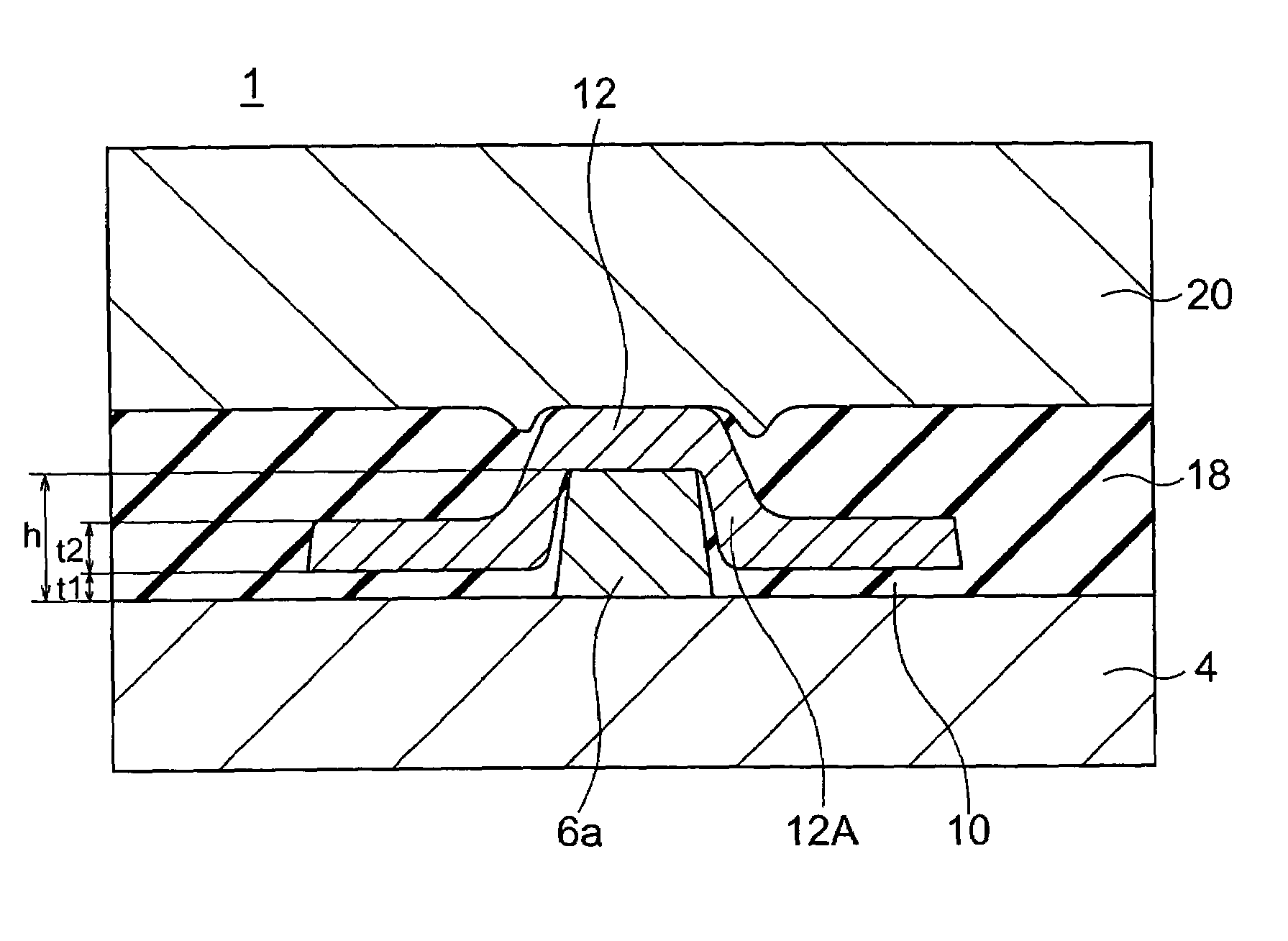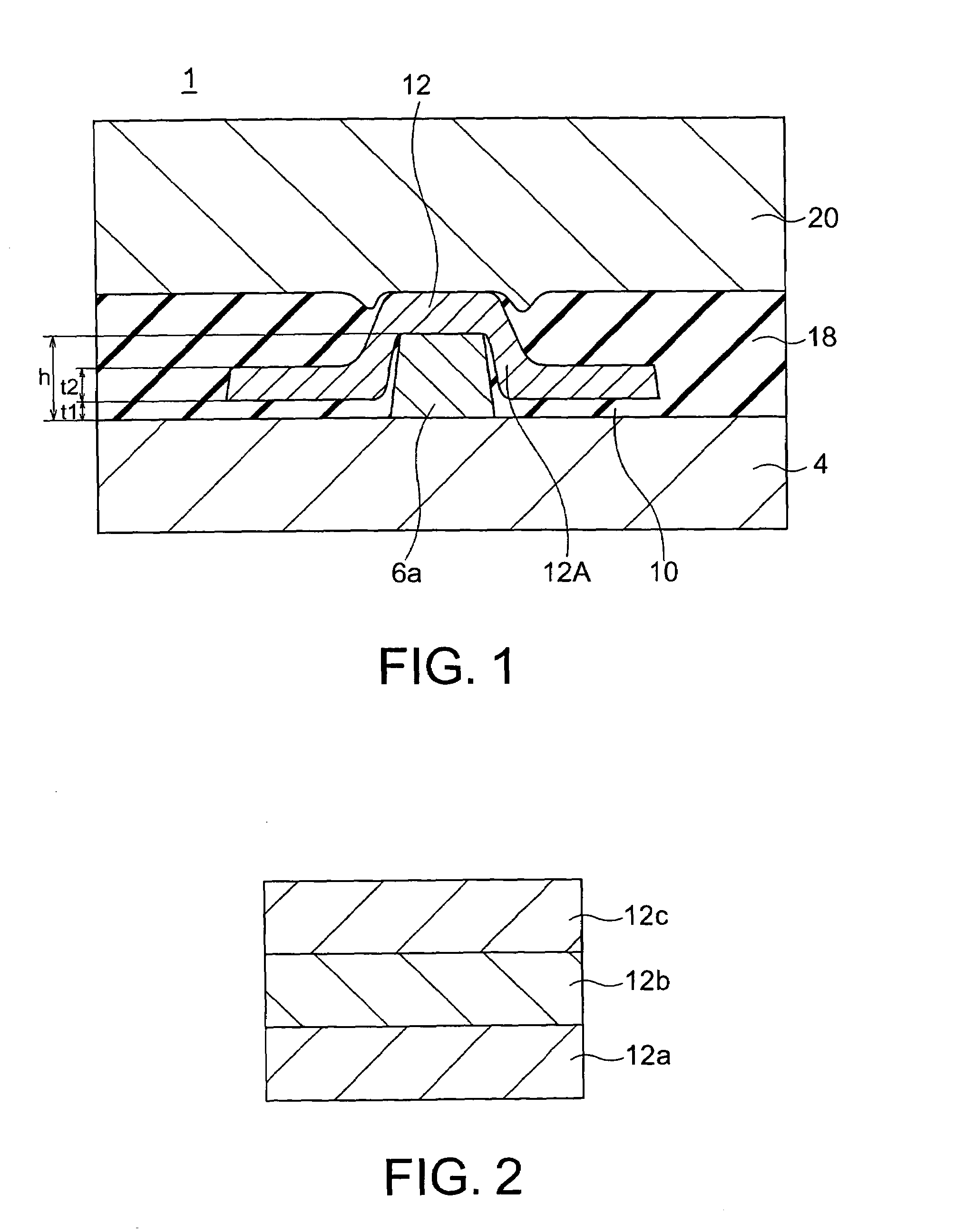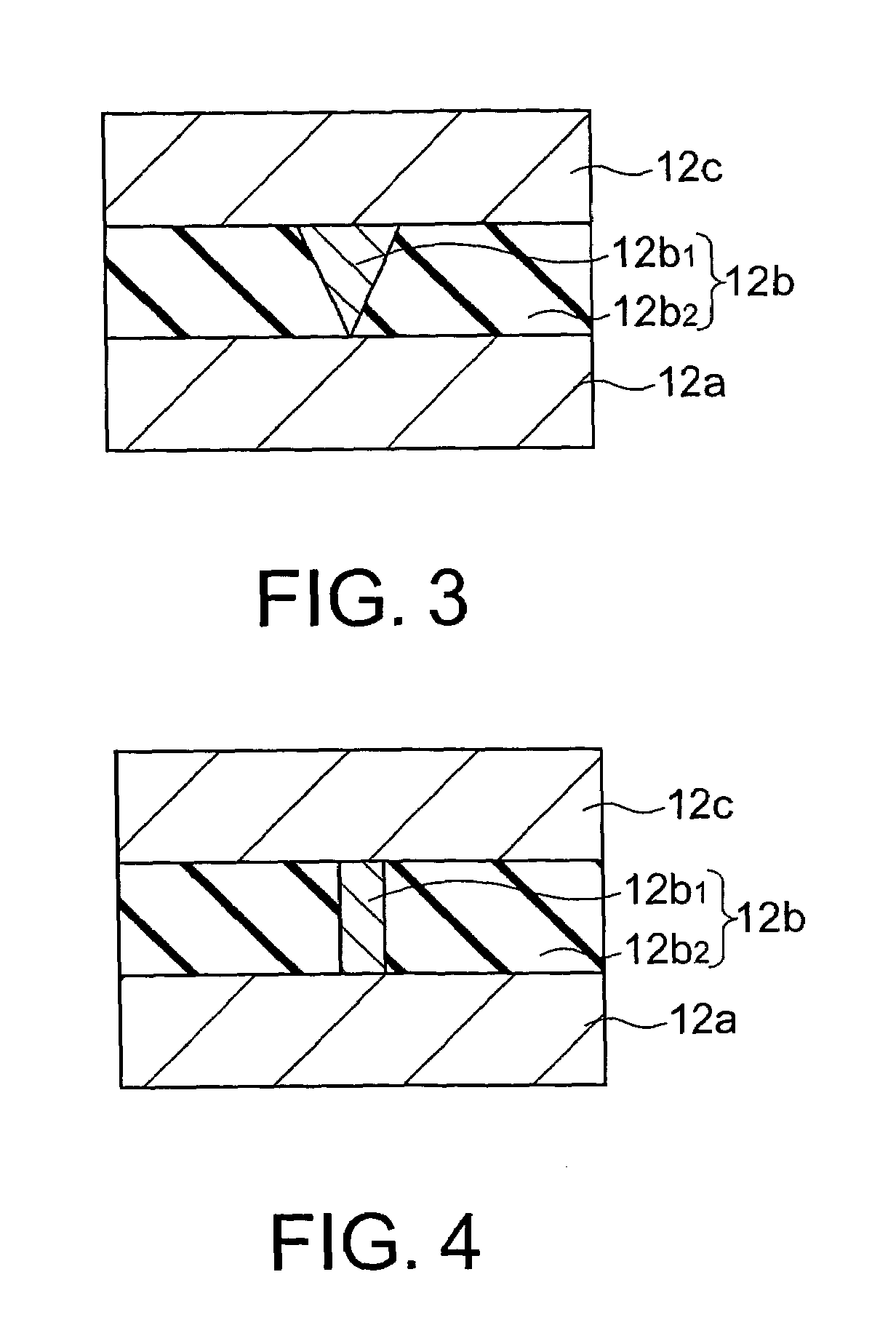Magnetic cell and magnetic memory
a magnetic memory and cell technology, applied in the field of magnetic memory and cell, can solve the problems of insufficient generated magnetic field, difficulty in conducting localization, and noticeable effect, and achieve the effect of reducing fluctuation and high developing rate of mr characteristics
- Summary
- Abstract
- Description
- Claims
- Application Information
AI Technical Summary
Benefits of technology
Problems solved by technology
Method used
Image
Examples
first embodiment
[0053]A constitution of a magnetic cell according to a first embodiment of the present invention is shown in FIG. 1. A magnetic cell according to the embodiment is provided with a lower electrode 4, an electrically conductive pillar 6a formed on the lower electrode 4, a magnetoresistance effect film 12 (hereinafter, also called “MR film 12”) formed on the electrically conductive pillar 6a, an upper electrode 20 formed on the MR film 12, a support layer 12A formed on a side face of the electrically conductive pillar 6a, and a current diffusion preventing layer 10 formed between the support layer 12A and the lower electrode 4.
[0054]The support layer 12A is provided on a side face of the electrically conductive pillar 6a via an insulating film 10. In this embodiment, when a height of the electrically conductive pillar 6a is represented as h, a thickness of the current diffusion preventing layer 10 is represented as t1, a thickness of the support layer 12a is represented as t2 and a len...
modified embodiment
[0074]As shown in FIG. 3, for example, regarding the intermediate layer, “a point contact”, namely, a fine contact 12b1 having a contacting area of 100 nm2 or less is provided in an intermediate layer 12b, and a soft magnetic layer 12a and a hard magnetic layer 12c are electrically connected to each other via the fine contact point 12b1. The fine contact point 12b1 can be formed such that one portions of the hard magnetic layer 12c and the soft magnetic layer 12a extend or it can be formed of such rare metal as copper (Cu), silver (Ag) or gold (Au), or alloy containing at least one these rare metals. In the intermediate layer 12b, a periphery of the fine contact point 12b1 is covered with an insulator 12b2 such as silicon oxide (SiOx) or aluminum oxide (AlOx).
[0075]As shown in FIG. 3, the fine contact point 12b1 may have a cone-shaped section, or it may have a pillar-shaped section, as shown in FIG. 4. Further, as shown in FIGS. 5 and 6, a plurality of fine contact points 12b1 may b...
second embodiment
[0095]Next, a magnetic cell according to a second embodiment of the present invention will be explained with reference to FIG. 18 to FIG. 20. FIGS. 18 to 20 are sectional views showing steps of manufacturing a magnetic cell according to this embodiment. The magnetic cell according to this embodiment has a constitution that the lower electrode 4 and the electrically conductive pillar 6a are integrally formed using the same material in the magnetic cell according to the first embodiment shown in FIG. 1. A constitution of the magnetic cell according to the embodiment will be explained with reference to FIGS. 18 to 20 which are sectional views for showing manufacturing steps.
[0096]As shown in FIG. 18, first, an electrode layer 5 was formed on a substrate 2 by forming Ta (5) / Cu—Ag (400) / Ta (10) on the substrate 2 in this order from the bottom by using sputter process and it was planarized and smoothed by CMP. A blanketed numeral denotes a film thickness (nm). An electrode terminal portio...
PUM
 Login to View More
Login to View More Abstract
Description
Claims
Application Information
 Login to View More
Login to View More - R&D
- Intellectual Property
- Life Sciences
- Materials
- Tech Scout
- Unparalleled Data Quality
- Higher Quality Content
- 60% Fewer Hallucinations
Browse by: Latest US Patents, China's latest patents, Technical Efficacy Thesaurus, Application Domain, Technology Topic, Popular Technical Reports.
© 2025 PatSnap. All rights reserved.Legal|Privacy policy|Modern Slavery Act Transparency Statement|Sitemap|About US| Contact US: help@patsnap.com



